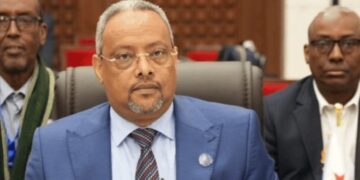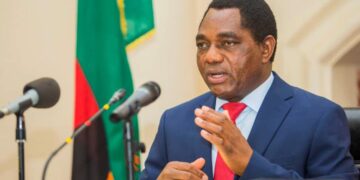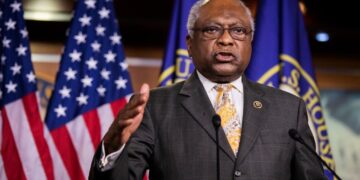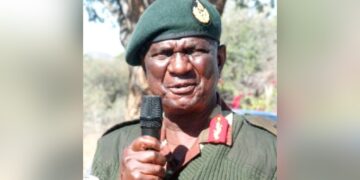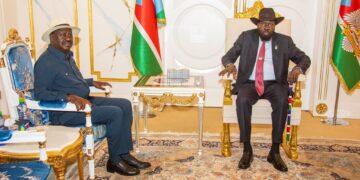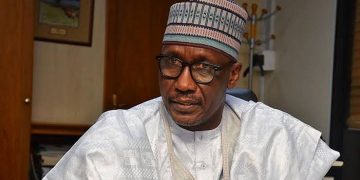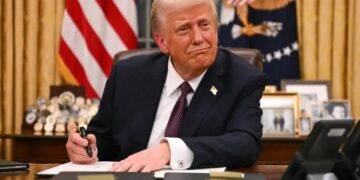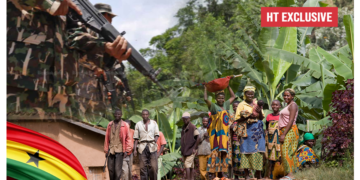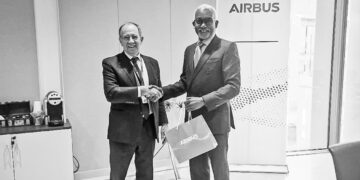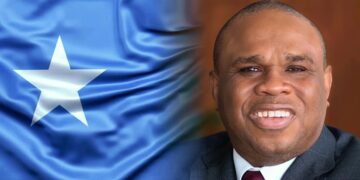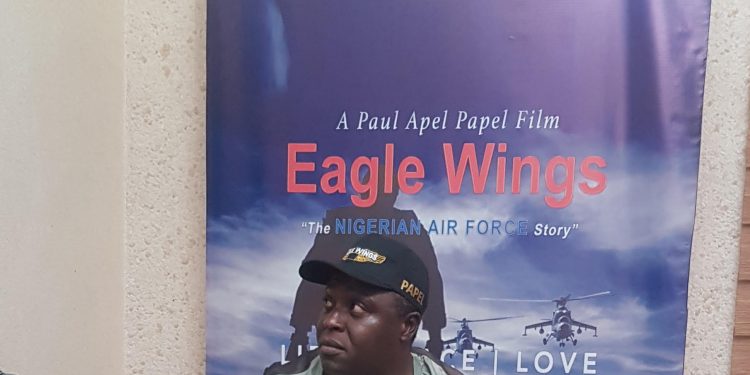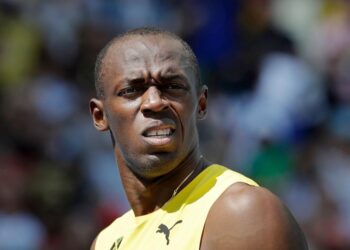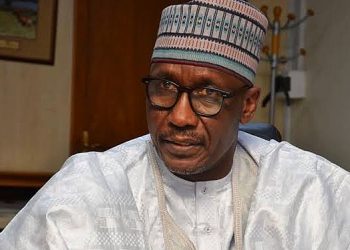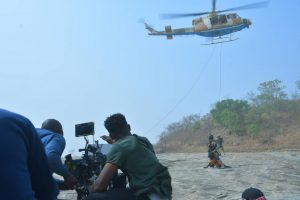
For over three months, social media has been abuzz with the trailer of Nollywood movie ‘Eagle Wings’ which was made in collaboration with the Nigerian Air Force. Heritage Times had a chat with the producer, Paul Apel-Papel of Papel Films on the movies pre-production and post-production activities.

What Inspired You To Make The Movie Eagle Wings?
After seeing their exercise activities, as a film maker I kept seeing images that I wanted Nigerians to see especially when it comes to the kind of sacrifices that this people go through to solve the problem of insecurity in the country.
They have a slogan ‘train hard to fight easy’, and in those trainings, exercise and operation I kept seeing images and there was no way I could explain this to anybody by just speaking.
The opportunity for me came when the Defence Headquarters (DHQ) called the Nollywood practitioners for a meeting and urged us to tell the military’s story in a proper way as we were portrayal of the military in a very negative way was very rampant.
So when the opportunity came I decided to tell the story of the Air Force since I was privileged to work with them severally. I wanted to tell a complete story that is I told the story of what their families go through, the officers and even the story of the bandits.
The story Eagle Wings sprung up because we wanted Nigerians to see the story from everyone’s angle and of course if you look at Eagle Wings, you see how problems were been solved by the Air Force and the military in general.
When the opportunity came I presented them with the script and the Air Force being a very professional body, what they did was to first of all give their professional input which they edited, especially the speeches, commands and codes. They had to explain how they spoke, how they behave, their hierarchy, what a soldier says, what an officer says, what a pilot says and even what the foot soldiers do. And with all of this, they still allowed me as a filmmaker to be able to tell my story the way I wanted (balanced) and not them showing only what they wanted people to see.
They set up a committee that worked with us, and our actors were trained to communicate and behave like officers. They were taught how to carry guns, how to communicate, do drills and some stunts that they do. The extreme ones were doubled with personnel.
We shot for 48 days but the preparation for the movie itself took, about six months. I commenced the principal photography on the 25th of February 2020 which was also my birthday and the movie was premiered also on the 25th of February 2021; making it one full year since principal photography and post production commenced.
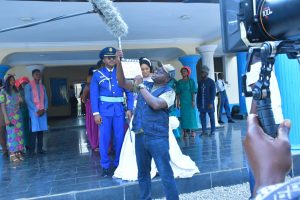
Do You Feel Now Is The Best Time To Tell The Military’s Story To The World, Considering The Rise In Insurgency?
It’s the best time to tell the story of the military as we have only been seeing the negative parts of the military and this film would help explain to the world that it’s not all what you hear that is happening. The film brings you closer to the real action and problems this people face. In fact, when you watch this film, you would want to contribute to help the military fight this war, as this people are fighting for their lives and they have families also.
When I was doing my film school, I boarded a plane in the U.S and before the pilot could take off, they introduced the military personnel on it one by one. And that alone was a great accolade. It would give these military men the extra bite to go and fight and die defending the nation. In a case where personnel feel like they are not well catered for, they would not really fight for the cause and this movie helps in highlighting the efforts of the military, so when we see a soldier, we can say thank you. We would not look down on them because they go through hell for us. The terrains they use are terrible, although we try to highlight them in the film, we are only re-enacting, but in real life, its even worst so appreciating them is timely now especially when things are going haywire. They are real people ready to kill and it’s not a figment of imagination. The more they kill these insurgents, the more they keep fighting back and this film also helps us see things from the perspective of these people.
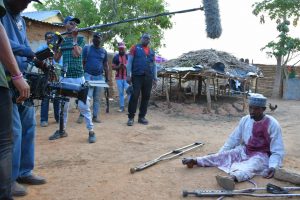
What Areas Or Perspective Is This Movie Helping To Correct, And What Message Should The Government Draw From This Movie?
I believe that the art world help to mould the society. There are things that were showed in American movies that were not in existence then and they exist now. I know for sure that if you watch ‘Eagle Wings’ and see the battle field and precision because the precision is done by the military itself, you would understand that it is possible to get things done. If there are lapses you fill them up and that is the essences of making the film. You show a beautiful city and you work towards achieving this city. You see me holding a gun and you see I’m fortified and that I can use it very well, you would think twice before coming at me. So, the film is showing us that we have the manpower, the training and the personnel’s and they can fight insurgence. Thus, in reality if this people get more support and acknowledgment, they would do more.
Like I said we make film to help mould life and through this film we are helping Nigerians know the kind of support needed and the sacrifices paid by this personnel.
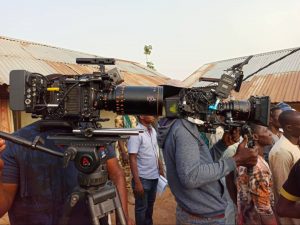
What Makes The Technical Quality Of This Film Different, And The Scale Of Production, What Does It Entail?
‘Eagle Wings’ is shot at the highest level of production, Nollywood in terms of stories have them in abundance but then there is a vehicle that carries this story out. I think usage of the vehicle has been our greatest challenge because sometimes we tend to rely deeply on the acting. The vehicle carries this movie out in terms of picture and sound for example, the film cameras screen out distraction and points you down to what you are to see and of course stories are in your face because no matter how big the movie is, it ends up in your face. So, if the camera can’t screen out distractions for me to see the emotions in your face, then that becomes a failed or defeated effort.
We shot with the R-camera, the HD sensor or the 16 by 9 sensor. We shot Open gate because the human eyes see wider and that is why the cinema experience is shot in such a way that you see all that is going on. This camera, shoots that type of wide image and the anamorphic lenses made for big screens are what we used because they see wide.
When I got approval for the movie, I felt that the best thing for this type of production was to make it Hollywood standard, so we got the R camera and we shot open gate. The clips were heavy and by the time we were through with shooting, we had about 16TB of footage and we had to buy a computer specifically for editing of footage because the ones we had could not cut it. Good enough, we were able to get one before the lockdown. The movie is best enjoyed in the cinema because that is what it was set out for. The sound is at 24bits (196KHZ) normal sounds for cameras is 19bits and by the time you process them in the studio it draws down to eight bits and it becomes very annoying.
There is a certain frequency that a human is okay with and once that frequency is right, you would begin to get drawn to it because it made to appeal to your person. What attracts you in this movie is the image, sound and the dialogue that is why the movie is in different languages, the Yoruba, Igbo, Hausa, Pidgin English and of course the Conventional English language here and there. Using this equipment cost a fortune but it was worth it because it was the first of its kind and any sensible person on this route would go all out. Post production was from March ending to January because the sound was matched, mastered and mixed. We did a colour grading so if you go to the cinema you would enjoy the experience.

What Is The Estimated Cost Of The Movie?
I think having the capacity to do something is different from having the money. Eagle Wings was something that I have been training for almost all my life. I made a film that is maybe N5m or much more but that is not all that we spent because if every dime was accounted for, then it looks like we spend over N500m. This is just about N145m but it’s worth more than that if we start looking at production. First fact about this movie was that everyone who walked on it was a Nigerian so when I was getting my crew I got those who were passionate about doing the work.
A Brief Synopsis Of The Movie?
It’s a story about an Air Force pilot like we know, so we have three friends who went to military school together, two of them are pilots and one is a regiment officer. One ran into a problem doing his mission and was been searched for, so as they were fighting to get their friend, they also ran into their own problem. Watching the movie, you would understand that everybody needs each other and that unity is important.
Location Of The Shooting?
We shot in Kaduna where we had to do most of the insurgency scenes, we shot in Maiduguri (one of the major quarters of insurgency) and we wanted to show you first hand the battle ground, we also shot in Abuja, the force headquarters, then we had inputs from other states (cities) like kainji.
Who Were The Cast Of The Movie?
We had some new faces because when we were doing this story, I wanted people to connect to it, I wanted it to be real to people so we sort for those who were quite convincing and I believe that they would become big names through this movie.
We told the cast not to act but be the character so everyone looked the part and played very well.
Some of them are, Eyinna Nwigwe, who played a pilot in this movie (he was trained for it), Femi Jacobs played a foot soldier, a regiment officer (was trained by the special forces in the Air Force, he was kept in the sun sometimes), Yakubu Mohamed was a pilot and he didn’t really get as much training as the others because his role didn’t require such. Uzee Usman played the leader of the insurgents, Funky Mallam, Saheed Mohammed was his 2iC. The Late Sadiq Daba, Keppy Ekpeyong Bassey, Tony Goodman, Nazareth Jesse,Abdul U. Zada, Patience Ujah, Francis Duru and myself (as air component commander) also played in the movie.

What Are Your Plans For Promotion?
Since we knew the scale of this movie was large, we had to work with the Air Force Investment Company which is the business arm of the force. Many people did not originally believe in the project because it was an Air Force story. So, they gave me the necessary support that I needed as they believed in the project and worked on it with me. They saw it clearly from the demonstrations we had. The investment company threw in money and then gave me other supports like props and location. The movie would hit cinemas March 12. The first premier was a private one organised by the Force and we had a lot of dignitaries present like the minister of Information and Culture who commended the movie. The good thing about this movie is that even for the families of this gallant people would at least see their spouse and parents on the war front and understand what they go through. There are a lot of emotions driven in this movie like, love, hope, loss and all. I have been doing a lot of talking and I urge Nigerians to go out there and support the movie.
![EXCLUSIVE: ‘Eagle Wings’ Cost Us Over N500million- Apel-Papel [FULL INTERVIEW]](https://www.theheritagetimes.com/wp-content/uploads/2021/03/unnamed-360x180.jpg)





